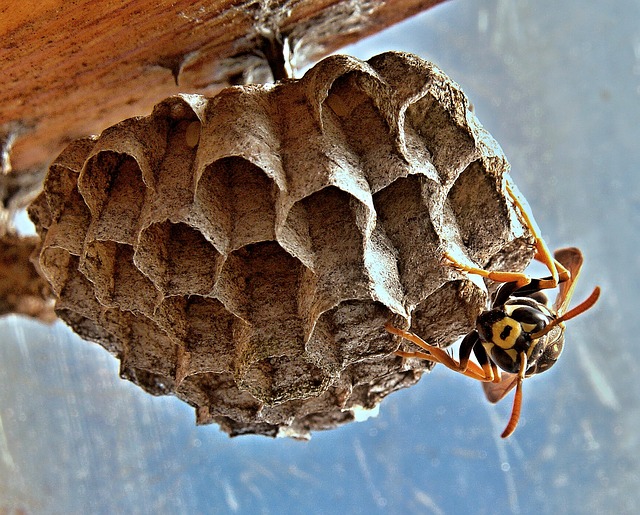
Wasp nest removal service is a specialized service provided to safely and effectively remove wasp nests from residential and commercial properties. Wasp nests can pose a significant threat to people in the vicinity, as some wasp species are aggressive and can sting multiple times, leading to painful reactions and, in some cases, allergic reactions.
Understanding wasps is essential for promoting coexistence and ensuring safety, as some species can pose risks to humans. Here are some key points to help you better understand wasps:
- Classification: Wasps belong to the order Hymenoptera, which also includes bees and ants. There are two primary families of wasps: social wasps (e.g., yellow jackets, hornets) and solitary wasps (e.g., mud daubers, cicada killers).
- Social Structure: Social wasps live in colonies and have a hierarchical structure consisting of a queen, female workers, and male drones. The queen is responsible for laying eggs, while the workers handle nest-building, foraging, and defending the colony. Drones mate with the queen during the reproductive phase.
- Solitary Wasps: Solitary wasps, as the name suggests, do not form colonies. Each female builds individual nests and cares for her own offspring. Solitary wasps are generally less aggressive than social wasps.
- Diet: Adult wasps primarily feed on nectar and plant juices, while the larvae are carnivorous. Social wasps often hunt insects and other arthropods to feed the developing larvae.
- Nest Construction: Different wasp species construct various types of nests. Social wasps build papery nests made from chewed wood pulp, while solitary wasps create nests using mud, plant material, or burrows in the ground.
- Defense Mechanisms: Wasps have a stinger located at the end of their abdomen, which they use for defense and subduing prey. Unlike bees, most wasp species can sting multiple times without losing their stinger.
- Seasonal Behavior: In temperate regions, wasp colonies are annual, with only the mated queens surviving the winter to start new colonies in the following spring. As the weather becomes colder, worker wasps die off, and the new queens hibernate until the next year.
- Importance in Ecosystem: Wasps play a vital role in ecosystems as predators of other insects, helping to control pest populations. They are also important pollinators, contributing to plant reproduction.
- Nuisance and Dangers: While most wasps are not aggressive unless provoked, some social wasps species, like yellow jackets and hornets, can become defensive and attack when they feel their nest is threatened. Wasp stings can cause pain, swelling, and allergic reactions in sensitive individuals.
- Human Interactions: To avoid potential conflicts with wasps, it's essential to be cautious around their nests and avoid sudden movements or loud noises that may provoke defensive behavior. If you encounter a wasp nest near human-occupied areas, it's best to seek professional wasp nest removal services.
By understanding the behavior and importance of wasps in the ecosystem, we can take appropriate measures to coexist with them safely. While some wasps may be considered pests when they build nests near human activity, many species are beneficial for maintaining ecological balance.
Here's what you can expect from our professional wasp nest removal service:
- Inspection: A trained pest control technician will conduct a thorough inspection of your property to locate the wasp nest(s) and identify the specific wasp species. This information helps determine the appropriate removal methods.
- Safety Measures: Before proceeding with the nest removal, the technician will take necessary safety precautions to protect themselves and others from potential stings. They will wear appropriate protective gear, such as bee suits and veils.
- Nest Removal: Depending on the nest's location and size, the technician will employ various methods to remove it. This may involve physically removing the nest or using specialized equipment to extract it.
- Insecticides: In some cases, insecticides may be used to treat the nest and eliminate any remaining wasps. Pest control professionals have access to specific products and application methods to ensure the safe and effective removal of the wasps.
- Prevention: To prevent wasps from rebuilding their nests in the same area, the technician may offer recommendations for sealing entry points and making your property less attractive to wasps.
- Follow-Up: In some situations, a follow-up visit may be necessary to ensure that the wasp infestation has been successfully eliminated and that no new nests are forming.
It's important to note that wasp nest removal can be hazardous and should be left to trained professionals. Attempting to remove a wasp nest on your own without the proper equipment and expertise can lead to stings and potential injuries. Additionally, certain wasp species, like hornets and yellow jackets, can be particularly aggressive when their nests are disturbed.
If you discover a wasp nest on your property, it's best to contact a licensed pest control company with experience in wasp nest removal. They have the knowledge and tools to safely and effectively handle the situation, ensuring the protection of both you and the environment.
